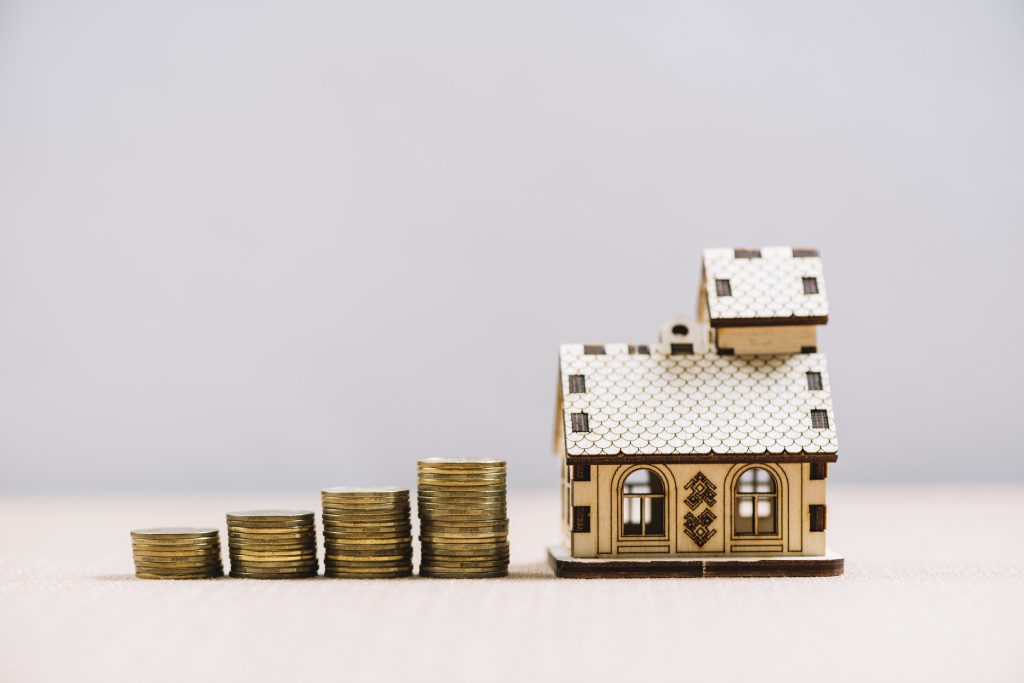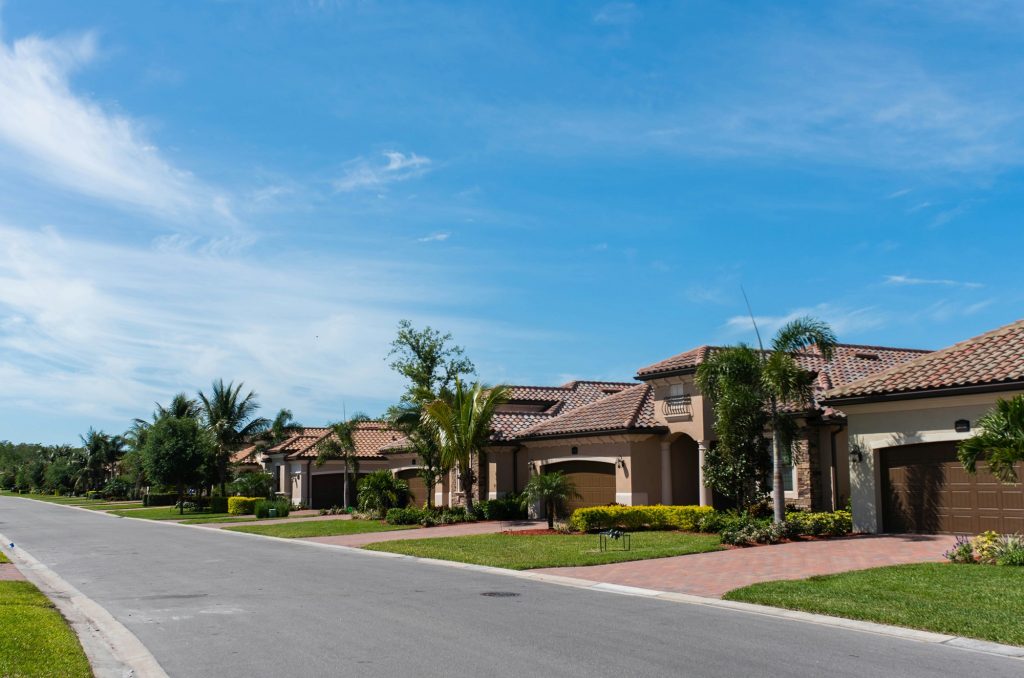
How to Analyze a Potential Real Estate Investment?
Introduction
Are you ready to take the leap into real estate investing? Analyzing potential real estate investments can be a daunting task, especially for beginners. But fear not! In this comprehensive step-by-step guide, we will walk you through the process of analyzing a potential real estate investment, ensuring that you are equipped with the knowledge and tools necessary to make informed decisions.
Whether you are considering residential properties, commercial buildings, or even land investments, this guide has got you covered. We will delve into crucial aspects such as market research, financial analysis, evaluating property condition, and conducting due diligence. By the end of this guide, you will have a solid understanding of how to assess the profitability and viability of a potential real estate investment.

So, if you’re ready to unlock the secrets of successful real estate investing, grab your notebook, sharpen your pencil, and let’s dive in. Get ready to analyze like a pro and make smart investment choices that will set you up for financial success in the real estate market.
Why analyzing a potential real estate investment is important
Analyzing a potential real estate investment is vital to ensure that you are making a sound financial decision. Without proper analysis, you may end up investing in a property that doesn’t generate sufficient returns or has hidden risks. By taking the time to thoroughly analyze a potential investment, you can avoid costly mistakes and maximize your chances of success.
One of the key reasons why analyzing a potential real estate investment is important is that it allows you to assess the location, property condition, market trends, potential rental income, expenses, and risks involved. These factors play a crucial role in determining the profitability and viability of an investment.
Another reason why analysis is important is that it helps you make informed decisions based on data and research rather than emotions or gut feelings. Real estate investing is a numbers game, and by analyzing the numbers, you can objectively evaluate the potential returns and risks associated with a particular investment.
In addition, proper analysis enables you to compare different investment opportunities and select the one that aligns with your investment goals and risk tolerance. By understanding the key factors in real estate investment analysis, you can make strategic decisions that will set you up for long-term financial success.

Understanding the key factors in real estate investment analysis
Before diving into the step-by-step process of analyzing a potential real estate investment, it’s important to understand the key factors that play a crucial role in determining the viability and profitability of the investment.
1. Location:
The location of a property is one of the most important factors to consider in real estate investment analysis. A property’s location influences its potential rental income, appreciation potential, and demand from tenants or buyers. Factors such as proximity to amenities, schools, transportation, and job opportunities can significantly impact the property’s value and investment potential.
2. Property Condition:
Evaluating the physical condition of a property is essential to understand the potential maintenance and repair costs associated with it. A thorough inspection of the property can help identify any structural issues, maintenance requirements, or potential red flags that may affect its value or rental income.
3. Market Trends and Demand:
Analyzing market trends and demand is crucial to determine the potential demand for the property. Understanding the local real estate market, vacancy rates, rental rates, and supply and demand dynamics can help gauge the investment potential of a property. Market research allows you to identify emerging trends, upcoming developments, and potential risks that may impact the property’s value and rental income.
4. Potential Rental Income and Expenses:
Calculating the potential rental income and expenses associated with a property is essential to determine its cash flow potential. Rental income should be estimated based on market rates and occupancy rates, while expenses should include property taxes, insurance, maintenance costs, and property management fees. By accurately estimating the income and expenses, you can assess the property’s cash flow potential and profitability.
5. Return on Investment (ROI):
Determining the potential return on investment (ROI) is a key factor in real estate investment analysis. ROI is calculated by dividing the property’s net operating income (NOI) by the total investment cost. This metric allows you to compare different investment opportunities and assess their potential returns. A higher ROI indicates a more profitable investment, while a lower ROI may indicate a riskier or less lucrative opportunity.
6. Risks and Potential Pitfalls:
Assessing the risks and potential pitfalls associated with a potential investment is crucial to make informed decisions. Risks can include factors such as changes in the local economy, zoning regulations, environmental issues, or unexpected expenses. Conducting due diligence and thoroughly evaluating the risks allows you to mitigate potential pitfalls and make investment choices with a clear understanding of the associated risks.
By understanding these key factors and incorporating them into your analysis, you can make informed decisions and maximize your chances of success in real estate investing.
Step 1: Assessing the location

When analyzing a potential real estate investment, the location should be your first consideration. The location of a property can have a significant impact on its potential rental income, appreciation potential, and demand from tenants or buyers.
Start by researching the local market and gaining a deep understanding of the area. Look for factors such as population growth, job opportunities, schools, amenities, transportation infrastructure, and future developments. These factors can indicate the potential demand for housing and the overall desirability of the location.
Additionally, consider the neighborhood and the surrounding properties. Are there any signs of gentrification or revitalization? Are there any major developments or infrastructure projects planned? These factors can influence the future value of the property and its investment potential.
It’s also important to evaluate the property’s proximity to amenities such as shopping centers, restaurants, parks, and public transportation. Properties located in desirable neighborhoods with easy access to amenities tend to attract higher-quality tenants and can command higher rental rates.
By thoroughly assessing the location, you can identify areas with strong growth potential and make informed decisions about whether a particular property fits your investment goals.
Step 2: Evaluating the property’s physical condition
After assessing the location, the next step in analyzing a potential real estate investment is evaluating the property’s physical condition. This step is crucial to understand the potential maintenance and repair costs associated with the property.
Start by conducting a thorough inspection of the property. Look for any signs of structural issues, water damage, pest infestations, or other red flags that may require significant repairs or renovations. Consider hiring a professional inspector to ensure that you don’t miss any hidden problems.
In addition to the structural condition, evaluate the property’s age, layout, and overall appeal. Properties that are outdated or poorly designed may require additional investments to attract tenants or buyers. Consider the property’s curb appeal, functionality, and potential for improvements or renovations.
It’s also important to consider the property’s systems and utilities. Inspect the electrical, plumbing, heating, and cooling systems to ensure they are in good working condition. Upgrading or replacing outdated systems can be costly, so it’s essential to factor these potential expenses into your analysis.
By thoroughly evaluating the property’s physical condition, you can estimate the potential maintenance and repair costs, as well as determine if any immediate or future renovations are necessary. This information will help you accurately assess the property’s value and investment potential.

Step 3: Analyzing market trends and demand
Analyzing market trends and demand is a critical step in determining the potential investment value of a property. Understanding the local real estate market, vacancy rates, rental rates, and supply and demand dynamics can provide valuable insights into the property’s profitability.
Start by researching historical market data to identify trends and patterns. Look for information on property values, rental rates, and occupancy rates over the past few years. This data can help you understand if the market is experiencing growth or decline and can provide a basis for estimating future trends.
Additionally, consider the current market conditions and any upcoming developments or infrastructure projects in the area. Are there any new businesses opening or major employers moving into the area? These factors can indicate a potential increase in demand for housing and higher rental rates in the future.
It’s also important to analyze the supply and demand dynamics in the market. Are there more properties available for rent or sale than there are tenants or buyers? High vacancy rates or an oversupply of properties can indicate a less desirable market for investors. Conversely, a market with low vacancy rates and limited supply can indicate strong demand and potential for higher rental rates.
By analyzing market trends and demand, you can identify areas with strong growth potential and make informed decisions about whether a particular property is likely to appreciate in value or generate consistent rental income.
Step 4: Calculating potential rental income and expenses
Calculating the potential rental income and expenses associated with a property is essential to determine its cash flow potential. Rental income should be estimated based on market rates and occupancy rates, while expenses should include property taxes, insurance, maintenance costs, and property management fees.
Start by researching the local rental market to determine the average rental rates for similar properties in the area. Consider factors such as the property type, size, location, and amenities when estimating the potential rental income. It’s also important to factor in the potential vacancy rate, as properties are not always occupied 100% of the time.
Next, calculate the potential expenses associated with the property. Consider property taxes, insurance premiums, maintenance costs, utilities, and any other expenses that may be incurred. If you plan to hire a property management company, include their fees in your expense calculations as well.
It’s important to be conservative when estimating both the rental income and expenses. Overestimating the rental income or underestimating the expenses can lead to unrealistic expectations and negatively impact your cash flow.
By accurately estimating the potential rental income and expenses, you can calculate the property’s net operating income (NOI) and determine its cash flow potential. A positive cash flow indicates that the property is generating more income than expenses, while a negative cash flow may require additional investment or adjustments to ensure profitability.
Step 5: Determining the property’s potential return on investment (ROI)
Determining the potential return on investment (ROI) is a key factor in real estate investment analysis. ROI is calculated by dividing the property’s net operating income (NOI) by the total investment cost. This metric allows you to compare different investment opportunities and assess their potential returns.
To calculate the ROI, start by determining the property’s net operating income (NOI). This is calculated by subtracting the property’s annual expenses from its annual rental income. The NOI represents the property’s cash flow before taxes and mortgage payments.
Next, calculate the property’s total investment cost. This includes the purchase price, closing costs, renovation or improvement expenses, and any other costs associated with acquiring and operating the property.
Once you have both the NOI and the total investment cost, divide the NOI by the total investment cost and multiply the result by 100 to get the ROI as a percentage.
A higher ROI indicates a more profitable investment, while a lower ROI may indicate a riskier or less lucrative opportunity. It’s important to compare the ROI of different properties and consider other factors such as location, market trends, and potential risks when making investment decisions.
By determining the property’s potential ROI, you can assess its profitability and evaluate whether it aligns with your investment goals and risk tolerance.

Step 6: Assessing the risks and potential pitfalls
Assessing the risks and potential pitfalls associated with a potential real estate investment is crucial to make informed decisions and mitigate potential risks. Real estate investing involves inherent risks, and it’s important to evaluate and understand these risks before committing to an investment.
Start by conducting due diligence and thoroughly researching the property and its surrounding area. Look for potential risks such as changes in the local economy, zoning regulations, environmental issues, or unexpected expenses. Consider hiring professionals such as property inspectors, appraisers, or attorneys to help identify potential risks and provide expert advice.
It’s also important to consider external factors that may impact the property’s value or rental income. For example, changes in interest rates, housing market trends, or economic downturns can affect the demand for rental properties or the property’s potential appreciation.
Evaluate the property’s potential risks based on your investment goals and risk tolerance. Consider factors such as the potential for rental income fluctuations, property value fluctuations, or unexpected maintenance and repair costs. Assess whether you are comfortable with the level of risk associated with the investment and whether the potential rewards outweigh the risks.
By thoroughly assessing the risks and potential pitfalls, you can make informed decisions and mitigate potential risks. This step is crucial to ensure that you are entering into an investment with a clear understanding of the associated risks and potential returns.
Step 7: Making a final decision and negotiating the deal
After completing the previous steps and thoroughly analyzing a potential real estate investment, it’s time to make a final decision and negotiate the deal.
Review all the information and data you have gathered throughout the analysis process. Consider the property’s location, physical condition, market trends, potential rental income, expenses, return on investment, and risks. Assess whether the investment aligns with your investment goals and risk tolerance.
If you decide to move forward with the investment, it’s time to negotiate the deal. Consider factors such as the purchase price, financing options, contingencies, and closing timeline. Work with real estate agents, attorneys, or other professionals to help you navigate the negotiation process and ensure that your interests are protected.
Negotiating the deal is an important step to ensure that you are getting the best possible terms and conditions for the investment. Be prepared to negotiate on price, repairs, or other aspects of the deal to reach a mutually beneficial agreement.
Once the deal is finalized, make sure to complete all necessary paperwork and conduct a final inspection of the property before closing. This will ensure that all terms and conditions are met and that there are no surprises or hidden issues.
Conclusion: The importance of thorough analysis in real estate investment
Thorough analysis is essential in real estate investment to ensure that you are making informed decisions and maximizing your chances of success. By assessing crucial factors such as location, property condition, market trends, rental income, expenses, return on investment, and risks, you can evaluate the viability and profitability of a potential investment.
Remember to conduct thorough due diligence, research the market, and consult with professionals when necessary. Real estate investing is not without risks, but by taking the time to analyze potential investments, you can make strategic decisions that set you up for long-term financial success.